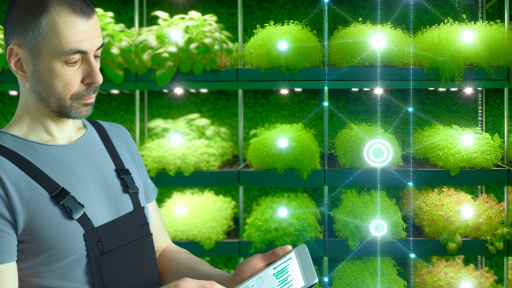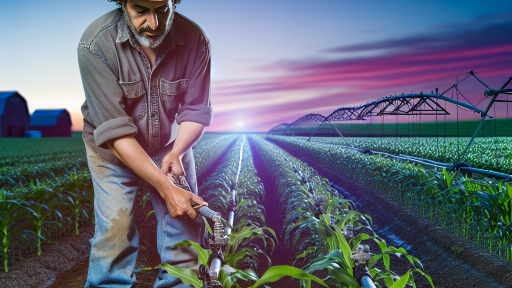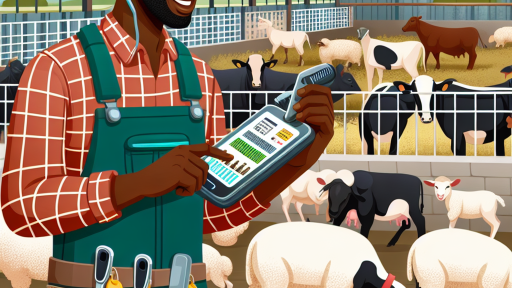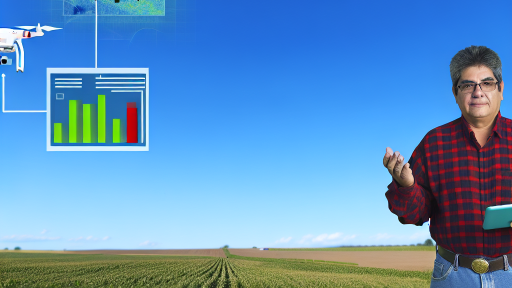Overview of Automated Machinery in Agriculture
Introduction to Automation
Automated machinery transforms modern agriculture significantly.
Farmers now rely on advanced technology for various tasks.
This shift enhances efficiency and productivity on farms.
Types of Automated Machinery
Several types of automated machinery are available.
For instance, tractors equipped with GPS technology improve precision.
Additionally, drones assist in monitoring crops and livestock.
Robotic harvesters streamline the harvesting process.
Benefits of Automated Machinery
Automation offers numerous benefits to agriculture.
First, it reduces labor costs for farmers.
Second, it increases overall crop yields.
Third, automated systems enhance data collection for better decision-making.
Challenges of Implementing Automation
Despite its benefits, implementing automation poses challenges.
High initial investment costs can deter farmers.
Additionally, a skills gap exists among the workforce.
Finally, maintenance of automated systems can be complex.
Transform Your Agribusiness
Unlock your farm's potential with expert advice tailored to your needs. Get actionable steps that drive real results.
Get StartedThe Future of Automated Machinery
The future of automated machinery looks promising in agriculture.
Innovation continues to drive advancements in farming technologies.
Furthermore, sustainability becomes a growing focus in automation.
Farmers will likely adopt increasingly advanced solutions in the coming years.
Types of Automated Machinery Used in Farming
Tractors
Tractors serve as the backbone of modern farming.
They perform various tasks such as plowing and tilling.
Newer models come equipped with GPS for precision guidance.
This technology reduces waste and increases efficiency.
Harvesters
Harvesters automate the harvesting process.
They can efficiently gather crops like grain and fruits.
Advanced models use sensors to determine ripeness.
This ensures optimal harvesting times for better yields.
Plowing Equipment
Plowing equipment includes various tools like disc plows and chisel plows.
These machines prepare the soil for planting.
Automated plowing reduces labor and time requirements.
As a result, farmers can focus on other essential tasks.
Seeders and Planters
Seeders and planters sow seeds into the prepared soil.
They provide uniform seed placement for optimal growth.
Automation ensures precise seed depth and spacing.
This consistency increases crop yields significantly.
Irrigation Systems
Automated irrigation systems manage water supply efficiently.
They utilize sensors to monitor soil moisture levels.
This technology optimizes water usage and conserves resources.
Moreover, it supports healthy crop development during dry spells.
Showcase Your Farming Business
Publish your professional farming services profile on our blog for a one-time fee of $200 and reach a dedicated audience of farmers and agribusiness owners.
Publish Your ProfileCrop Monitoring Drones
Drones have revolutionized crop monitoring practices.
They provide real-time data on crop health and growth.
Farmers can quickly identify areas needing attention.
This proactive approach helps in maintaining overall farm productivity.
Livestock Management Tools
Automated tools also enhance livestock management.
Feeding systems ensure animals receive adequate nutrition.
Monitoring devices track health and behavior patterns.
This technology improves animal welfare and farm efficiency.
Benefits of Implementing Automation in Agriculture
Increased Efficiency
Automation significantly enhances operational efficiency in agriculture.
Farm machinery performs tasks faster than manual labor can.
This efficiency leads to higher productivity and reduced labor costs.
Moreover, technology ensures consistent performance across various tasks.
As a result, farmers can produce more with less effort.
Improved Data Management
Automation facilitates advanced data collection techniques.
Farmers can monitor crop health in real-time using sensors.
Furthermore, this data helps in making informed decisions.
Farmers can adjust strategies based on data insights.
Consequently, data-driven agriculture optimizes crop yields.
Labor Shortages Mitigation
Many agricultural sectors face labor shortages today.
Automation addresses this challenge effectively.
Robotics and automated machines reduce reliance on manual labor.
This transition helps maintain production levels with limited workforce.
Thus, it ensures a smoother operation regardless of labor availability.
Minimized Resource Waste
Automated systems enhance resource management in farming.
Precision agriculture minimizes water and fertilizer usage.
Farmers can tailor inputs according to precise needs.
This practice reduces environmental impact significantly.
As a result, sustainability in agriculture improves over time.
Enhanced Crop Quality
Automation contributes to the production of higher quality crops.
Consistent monitoring and care lead to healthier plants.
Automated systems can also optimize harvest timing.
This optimal harvesting influences the flavor and nutritional value.
Farmers are more likely to meet market demands with superior products.
Find Out More: Implementing GPS Technology in Precision Farming
Challenges and Limitations of Agricultural Automation
High Initial Costs
Investing in automated machinery requires significant financial resources.
Farmers often hesitate due to the steep upfront costs involved.
Budget constraints can limit access to advanced technologies.
Additionally, financing options may not be readily available.
Technical Complexity
Automated machinery can be complex to operate and maintain.
Farmers may need specialized training to use these technologies effectively.
Showcase Your Farming Business
Publish your professional farming services profile on our blog for a one-time fee of $200 and reach a dedicated audience of farmers and agribusiness owners.
Publish Your ProfileTechnical issues can arise, requiring expert intervention for repairs.
This complexity can create barriers for smaller farms without resources.
Dependency on Technology
Heavily relying on automated systems can pose risks.
Technical failures can disrupt farming processes significantly.
Farmers must develop contingency plans for such scenarios.
Over-dependence may lead to reduced traditional skills among workers.
Environmental Concerns
Automated machinery can impact the environment in various ways.
Some technologies may contribute to soil compaction and erosion.
Consequently, this raises concerns about sustainability in farming.
Furthermore, energy consumption can also increase, affecting costs.
Limited Adaptability
Automated systems may not easily adapt to changing conditions.
This inflexibility can lead to inefficiencies in varying environments.
Farmers might struggle to customize machinery for specific crops.
Consequently, this can affect yield and profit margins adversely.
Regulatory and Safety Issues
Regulatory frameworks surrounding agricultural automation can be complex.
Farmers must comply with various safety standards and regulations.
This compliance can lead to increased operational costs.
Additionally, navigating these regulations requires time and expertise.
Uncover the Details: Benefits of Smart Irrigation for Modern Farmers
Case Studies of Successful Automated Farming Operations
Innovative Practices at Green Valley Farms
Green Valley Farms implemented cutting-edge automation technology in its operations.
They adopted precision agriculture tools for planting and harvesting.
Consequently, they achieved a 20% increase in crop yield.
Moreover, they reduced labor costs significantly through mechanization.
This operation serves as a model for sustainable farming practices.
Automation at EcoGrow Solutions
EcoGrow Solutions revolutionized their farming methods with drones.
The drones monitor crop health and soil conditions in real-time.
This technology provides farmers with valuable data for decision-making.
As a result, EcoGrow reduced pesticide use by 30%.
Farmers can now apply treatments with greater accuracy and efficiency.
Tech Innovations at Urban Harvests
Urban Harvests features vertical farming combined with automation.
They utilize smart sensors to regulate water and nutrient delivery.
This system enhances resource efficiency and minimizes waste.
By automating these processes, Urban Harvests maximizes productivity.
Furthermore, their produce grows faster in controlled environments.
Results from Sunny Meadows Farm
Sunny Meadows Farm achieved remarkable results from robotic systems.
They deployed autonomous tractors for tilling and planting.
This mechanization not only saved time but also decreased soil compaction.
Sunny Meadows reported a higher quality of produce as a result.
Automation has transformed their operation into a high-tech agricultural model.
Lessons from Harvest Automation Group
Harvest Automation Group embraced robotics for harvesting tasks.
Showcase Your Farming Business
Publish your professional farming services profile on our blog for a one-time fee of $200 and reach a dedicated audience of farmers and agribusiness owners.
Publish Your ProfileThese robots can work around the clock, improving harvest efficiency.
They learned that integrating technology boosts workforce morale.
The team’s focus shifted towards more strategic and creative tasks.
This customization of roles optimizes overall farm productivity.
Delve into the Subject: Essential Precision Farming Tools for Modern Farmers
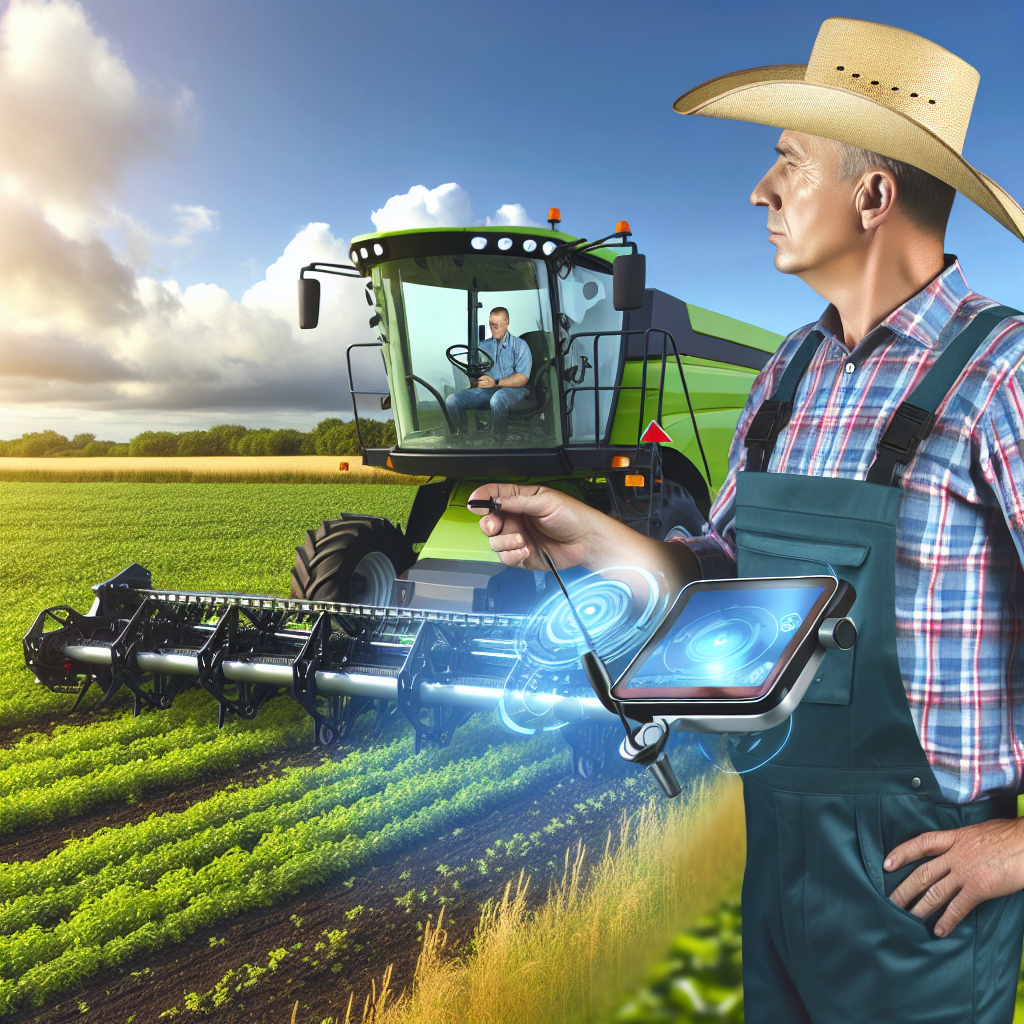
Impact of Automated Machinery on Crop Yields and Quality
Enhancement of Crop Yields
Automated machinery significantly boosts crop yields.
These machines operate with high precision and efficiency.
For instance, planting machines ensure optimal seed placement.
Likewise, automated irrigation systems provide consistent watering.
This consistency reduces water waste and improves plant health.
Furthermore, harvesting machines reduce the time needed for collection.
Consequently, farms can handle larger areas with ease.
Overall, these enhancements lead to higher production rates.
Improvement of Crop Quality
Automated machinery also improves crop quality substantially.
Using precision agriculture technologies, farmers manage inputs wisely.
For example, drones monitor crop health regularly.
This monitoring allows for timely interventions when issues arise.
Moreover, automation minimizes crop damage during planting and harvesting.
As a result, produce is fresher and more marketable.
This quality contributes to better customer satisfaction.
Cost Efficiency
Cost efficiency is another advantage of automated machinery.
Automation reduces the need for manual labor on farms.
Consequently, farmers can allocate resources to other important areas.
Furthermore, machines increase operational speed and accuracy.
This efficiency lowers overall production costs.
In the long term, savings from automation can be substantial.
Environmental Impact
Automated machinery positively affects the environment.
For instance, precision farming reduces input usage.
This reduction minimizes chemical runoff into local ecosystems.
Additionally, reduced fuel consumption leads to lower emissions.
Moreover, automated systems can help with soil conservation.
They support less tillage, preserving vital soil health.
Ultimately, automated machinery promotes sustainable farming practices.
Discover More: Robotic Solutions For Pest Control
Future Trends in Agricultural Automation and Technology
Integration of AI and Machine Learning
Artificial Intelligence (AI) significantly impacts agriculture today.
Farmers increasingly adopt AI for data analysis and decision-making.
Machine learning algorithms optimize crop yields effectively.
Additionally, these technologies enhance predictive analytics capabilities.
Overall, AI-driven solutions improve efficiency in farming operations.
Advancements in Robotics
Robotic systems play crucial roles in modern agriculture.
Showcase Your Farming Business
Publish your professional farming services profile on our blog for a one-time fee of $200 and reach a dedicated audience of farmers and agribusiness owners.
Publish Your ProfileRobots assist in planting, harvesting, and monitoring crops.
These machines reduce labor costs and increase productivity.
Moreover, they operate with precision in various field conditions.
The future promises more sophisticated robots tailored for agriculture.
Use of Drones and Aerial Imaging
Drones are revolutionizing agricultural monitoring practices.
They provide real-time aerial imagery of vast farmlands.
Farmers utilize drones for crop assessments and health tracking.
This technology enhances the ability to manage resources efficiently.
Consequently, drone usage supports timely decision-making processes.
Internet of Things (IoT) in Agriculture
The Internet of Things connects devices across the agricultural landscape.
IoT sensors collect critical data on soil health, moisture levels, and weather.
This technology empowers farmers to make informed decisions.
Furthermore, IoT enhances automation in irrigation systems.
Eventually, these smart technologies contribute to sustainable practices.
Impact of Sustainable Practices
Automated systems promote sustainable farming methods effectively.
Farmers increasingly adopt precision agriculture techniques.
This approach reduces resource waste while maximizing outputs.
Consequently, sustainability becomes integral to agricultural technology.
In the future, eco-friendly innovations will lead agriculture forward.
Integration of AI and Machine Learning in Farming Automation
The Role of Artificial Intelligence in Agriculture
Artificial intelligence is transforming agriculture significantly.
Farmers use AI to analyze large amounts of data.
This analysis helps them make informed decisions quickly.
Moreover, AI algorithms can optimize crop yields effectively.
For example, they can predict the best planting times.
Additionally, AI-driven tools enhance pest detection and management.
Machine Learning for Precision Farming
Machine learning allows for more accurate farming techniques.
It helps farmers utilize data from various sources.
This includes weather patterns, soil conditions, and crop health.
As a result, farmers can tailor their practices to specific needs.
For instance, they can apply fertilizers only where required.
This targeted approach reduces costs and environmental impact.
Automation Technologies in Farming
Automation technologies play a crucial role in modern agriculture.
Robots and drones increasingly handle various farming tasks.
These machines perform tasks like sowing, watering, and harvesting.
Consequently, they save time and reduce labor needs significantly.
Farmers benefit from consistent quality and efficiency from automation.
Furthermore, robotic systems collect data during operations.
Challenges in Implementing AI and Automation
Despite the advantages, challenges persist in implementation.
For example, the initial investment in technology can be high.
Small farms may struggle to afford advanced systems.
Showcase Your Farming Business
Publish your professional farming services profile on our blog for a one-time fee of $200 and reach a dedicated audience of farmers and agribusiness owners.
Publish Your ProfileAdditionally, training farmers to use these technologies is essential.
Many farmers may lack the technical knowledge required.
Moreover, data privacy and cybersecurity raise concerns as well.
The Future of Farming with AI and Machine Learning
The future of agriculture looks promising with new technologies.
Farmers are becoming more adept at using AI tools.
This trend will lead to increased productivity and sustainability.
Consequently, food security may improve worldwide.
Additionally, advances in technology will likely continue rapidly.
Farmers must adapt to remain competitive in this evolving landscape.
Additional Resources
AI in Agriculture and Farming: Revolutionizing Crop Growth – Intellias
Ensuring American Leadership in Automated Vehicle Technologies

